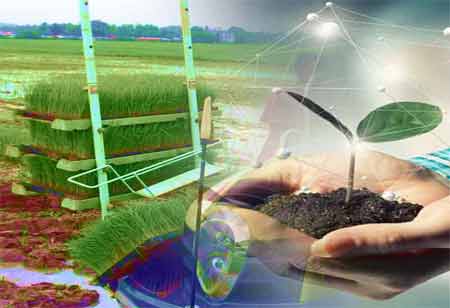Thank you for Subscribing to Agri Business Review Weekly Brief
Use of Robots in Agriculture
In the agriculture industry, robots may do sophisticated activities such as monitoring crops and testing the pH levels of the soil, as well as simpler duties like collecting and packaging fruits and vegetables and planting seeds.

By
Agri Business Review | Friday, April 07, 2023
Stay ahead of the industry with exclusive feature stories on the top companies, expert insights and the latest news delivered straight to your inbox. Subscribe today.
Continuous efforts are made by the agricultural industry to boost productivity, enhance efficiency, and reduce waste. This has led to integrating robotics and automation into agricultural and food production activities.
FREMONT, CA: In the agriculture industry, robots may do sophisticated activities such as monitoring crops and testing the pH levels of the soil, as well as simpler duties like collecting and packaging fruits and vegetables and planting seeds. Adding to this the automation of ventilation systems and air control for livestock, milk production, and arable irrigation, it is evident that technology is the future of thriving agriculture.
Robotics and automation are crucial for large, industrialized farms with a significant amount of land to monitor and labor and a high volume of crops or produce to process. Nowadays, robots do the following tasks:
Sowing seeds: Driverless tractors and robots are gradually replacing driver-operated equipment.
Harvesting: A typical application of robots on farms, particularly in light of the present labor scarcity, is the deployment of robots with picking arms to harvest ripe fruits and vegetables.
Packaging: Fruits and vegetables for retail distribution are frequently packed using a conveyor belt and robotic arms that sort the food by type. They may be designed to distinguish between good and substandard products, allowing only the best to reach shop shelves.
Palletizing: This is typically performed by a forklift and operator but is also mechanized in many cases by palletizing robots or robotic arms.
Crop management: Robots can be programmed to maintain crops by thinning plants, removing weeds, applying insecticides or nutrients, and irrigating.
Numerous repetitive chores associated with livestock production can be automated, including milking cows, spreading feed, and monitoring grazing acreage.
The advantages of robotics in agriculture
Despite the initial financial investment required to automate agricultural systems, there are many benefits, including:
Productivity: Robots can work faster and longer than humans without a decrease in output, risk of injury, or need for breaks.
With seasonal chores like fruit picking, obtaining people on time might be challenging. But robots are available to harvest the fruit when it is ripe, eliminating the possibility of a crop rotting on the ground.
Reduction of waste: Crops may be well-spent if left in the ground owing to staff shortages or if they need to be palletized in time for delivery. This will not occur with automation.
Precision: As robots are immune to human error, repeated activities (and even complex ones) will be performed precisely throughout the process.
Cost-effective: Although the initial investment may be substantial, the money is quickly recouped as farms operate more efficiently with less waste, labor, and lower operating expenses.
Developing robots for agricultural purposes
Motors are a crucial component that enables robots to do their tasks, driving their robotic arms so they can move, grasp, and conduct precise operations.
When building robots, manufacturers must verify that the installed motors are optimal for the task.





